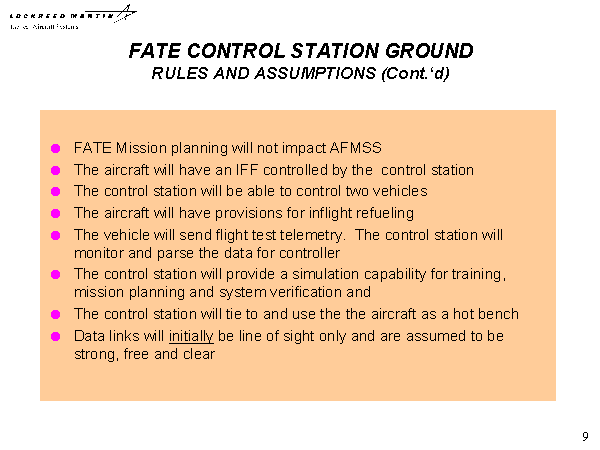Slide 9 of 28
Notes:
EVEN MORE GROUND RULES AND ASSUMPTIONS (Page 3)
It is intended to use AFMSS during some FATE activities. However, we will use AFMSS as is. It is a production system that the UCAV ATD program should not change. This means that adaptive software will be needed to interface and use the AFMSS for UCAV ATD mission planning, but without changes to the AFMSS. The vehicle will have an IFF. It is TBD at this time exactly what modes will be used or installed. It is assumed that at least Mode 3C and Mode S will be used. Most UAVs carry IFFs that are mechanically set via thumb wheels before launch. This vehicle will have an IFF that the Modes and Codes can be changed remotely . The vehicle avionics can also change the Modes and codes so that the IFF could be used as a form of communication during failures or for other purposes. Just as certain IFF “squawks” are used today to indicate emergencies, a preplanned set of codes could be used to indicate conditions occurring on the vehicle. Examples might be special codes to indicate a full data link failure, flame out, electrical power failure, or an abort condition. In order to see these codes, the control station will need an IFF Interrogator. The ground rule to control two vehicles was initially derived from the program goal to build two vehicles. During this presentation this was amended to mean an “unspecified” number of multiple vehicles. It is desirable for the control station to control UCAV surrogates also. Therefore, growth to multiple vehicles should be planned in the design of the control station (C/S). The inflight refueling requirement is used to ensure that growth and flexibility to monitor and or control a refueling operation be included in the C/S, but will not be an initial capability.















